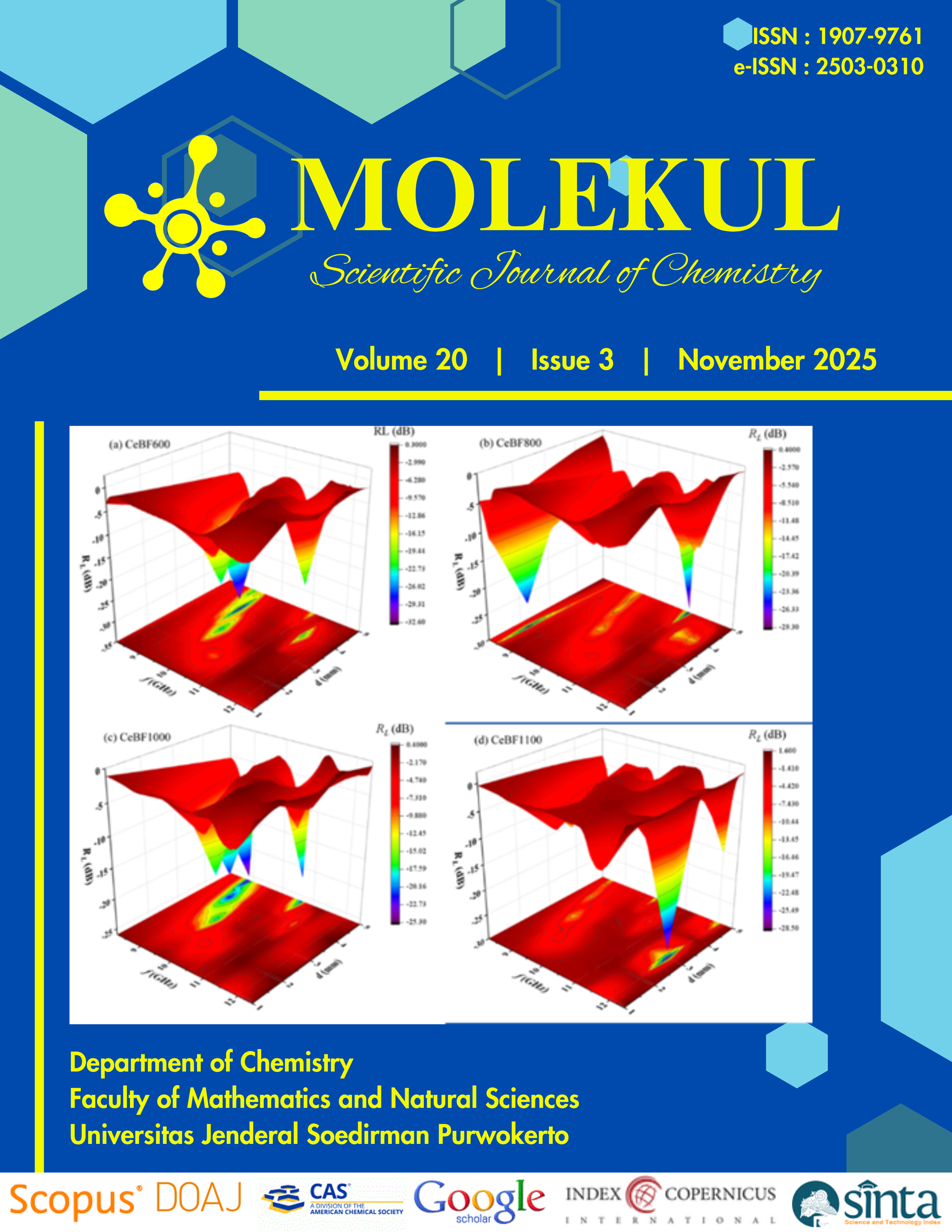Development and Validation of Zerumbone Analysis Method Using Ultraviolet-Visible Spectrophotometry
Abstract
ABSTRACT. Analytical method development ensures that an analytical procedure is suitable for the identification and quantification of compounds of interest. This study aimed to develop and validate a simple, cost-effective analytical method for the determination of zerumbone using UV-Vis spectrophotometry. Method validation was conducted according to ICH Q2(R2) guidelines, including tests for specificity, linearity, limit of detection (LOD), limit of quantification (LOQ), accuracy, and precision. Zerumbone exhibited a maximum absorption wavelength (λmax) of 212 nm when dissolved in dimethyl sulfoxide (DMSO). The method demonstrated excellent linearity with a determination coefficient (R2) of 0.9991 across a concentration range of 10-50 μg/mL. Accuracy, evaluated via recovery studies, ranged from 91,00% to 110,45%. Precision testing results in a % RSD of 0.58%. The calculated LOD and LOQ were 1.55 μg/mL and 4.70 μg/mL, respectively. This validated method is simple, rapid, and economical, making it a promising alternative for zerumbone analysis in quality control laboratories.
Keywords: Zerumbone, Method Development, UV-Vis Spectrophotometry, Validation, ICH Guidelines.
Authors agree with the statements below:
- Authors automatically transfer the copyright to the MOLEKUL journal and grant the journal right of first publication with the work simultaneously licensed under a Creative Commons Attribution 4.0 International License (CC BY 4.0).
- Authors are able to enter into separate permission for the non-exclusive distribution of the journal's published version of the work (e.g., post it to an institutional repository or publish it in a book), with an acknowledgment of its initial publication in this journal.













